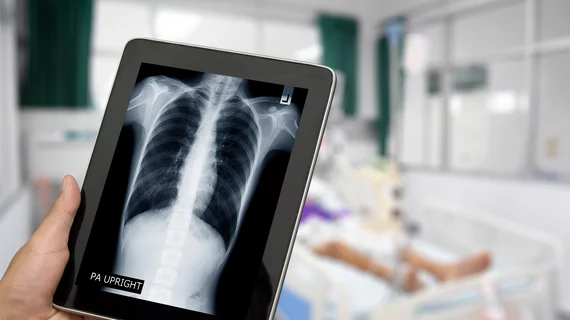For radiology residents, higher volumes equal improved performance—if programs don’t overdo it
Radiology residents tend to see their clinical performance and test performance improve as they get more experience interpreting studies. If residents are asked to do too much, however, their performance will suffer.
Vikas Agarwal, MD, with the department of radiology at the University of Pittsburgh Medical Center in Pittsburgh, and colleagues studied this delicate relationship between volume and clinical performance, sharing their findings in Academic Radiology.
Agarwal and colleagues studied the volumes, clinical performance and exam scores of three graduating classes of radiology residents from a single residency program. Overall, the 37 residents interpreted a mean of more than 12,000 exams. As the number of studies increased, performances improved—until volumes hit approximately 16,000 exams. At that point, the authors found, performance began to go in the wrong direction.
“The total number of studies interpreted during radiology training correlates with performance,” the authors wrote. “Residencies should endeavor to find the ‘sweet spot’: the amount of work that maximizes clinical exposure and knowledge without overburdening trainees.”
Agarwal et al. noted that previous studies have found increased volumes can lead to higher discrepancy rates for radiologists, but this does not mean programs should go easy on trainees.
“Volume and exposure is critical for radiology resident development,” the authors wrote. “Several authors have noted that clinical performance improves with training. As expected, more senior radiology residents have lower discrepancy rates. It is logical that even within a given class year, residents who have interpreted more examinations over the preceding years will, in general perform better than residents who have interpreted fewer examinations.”

